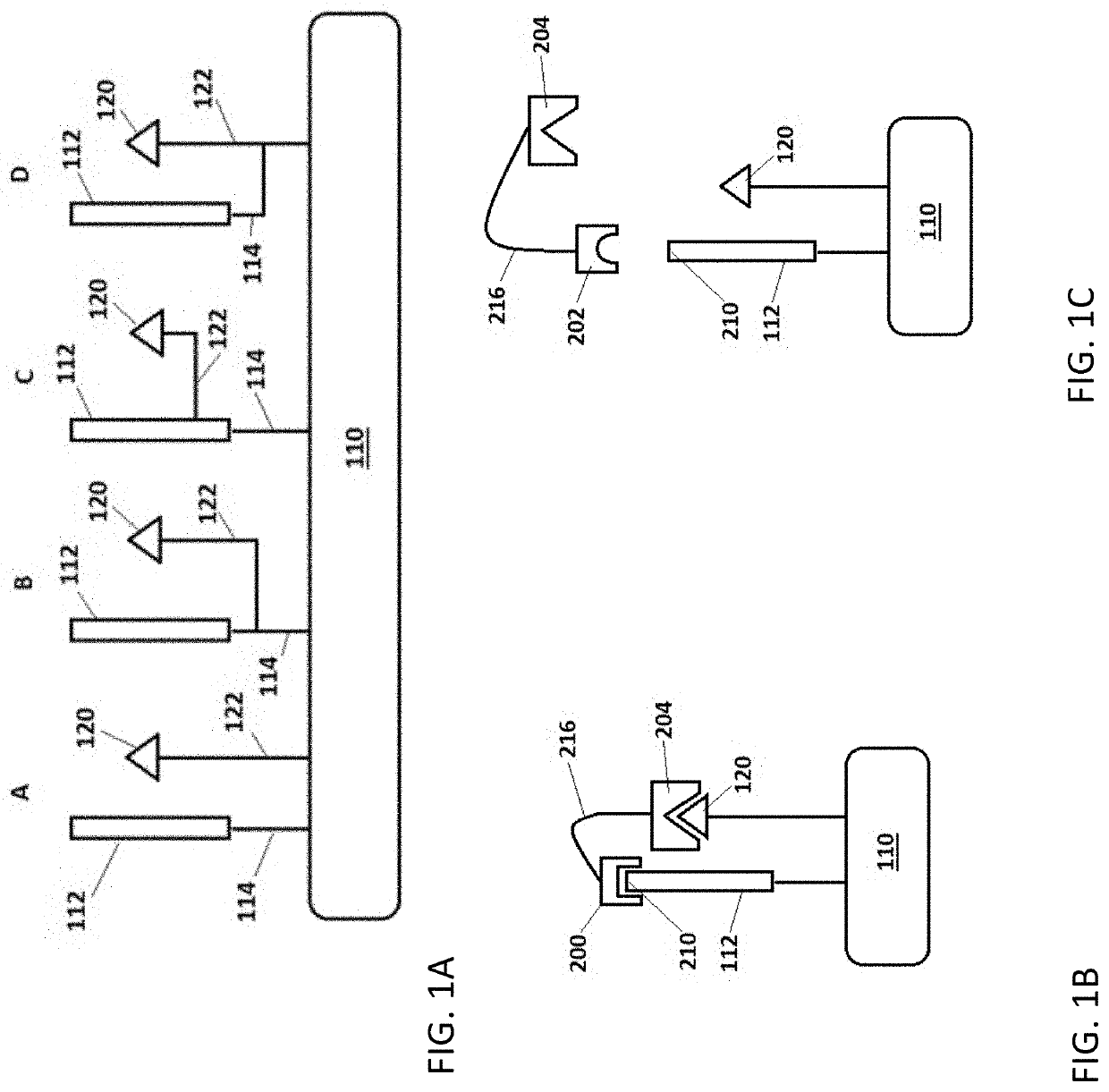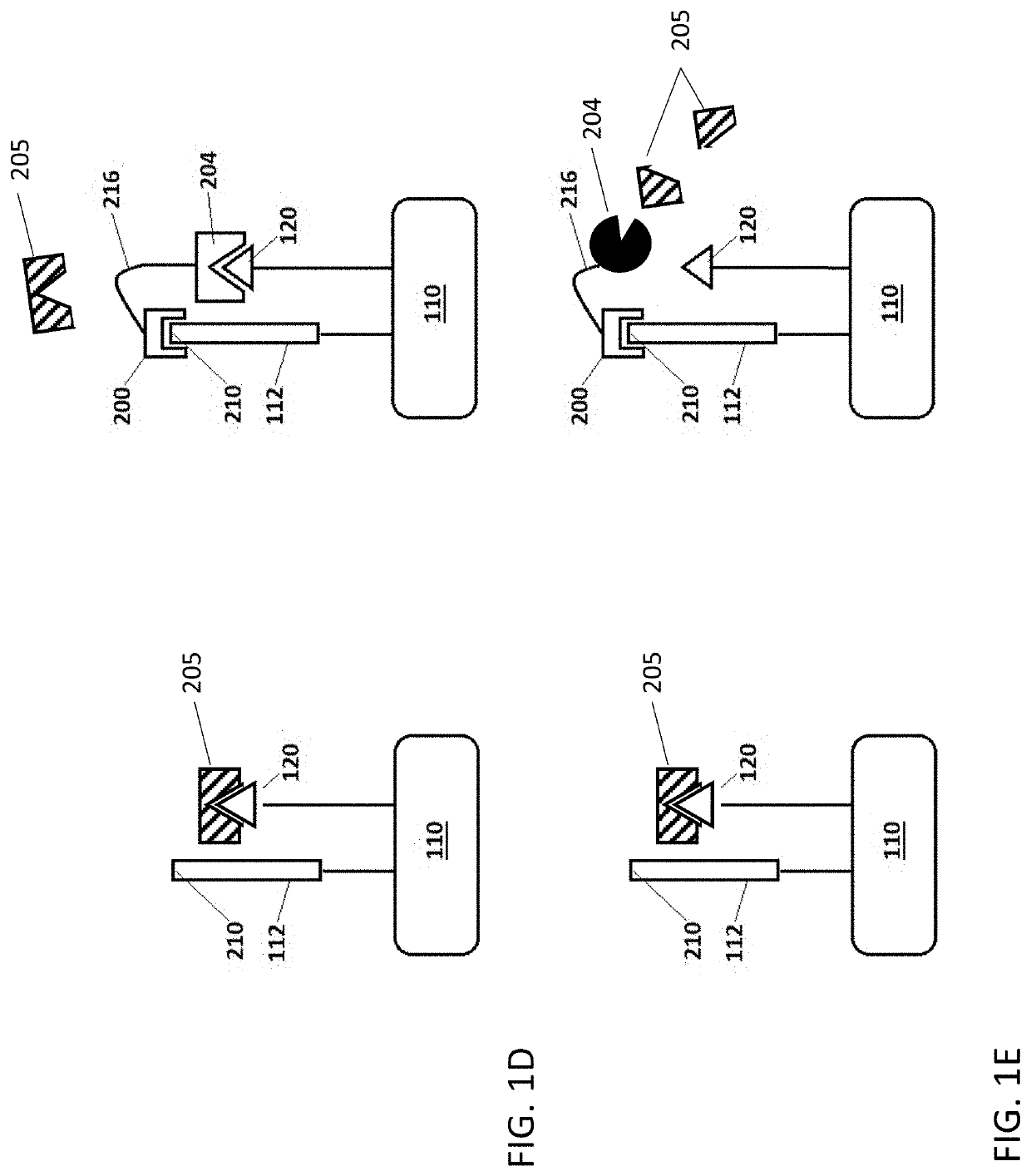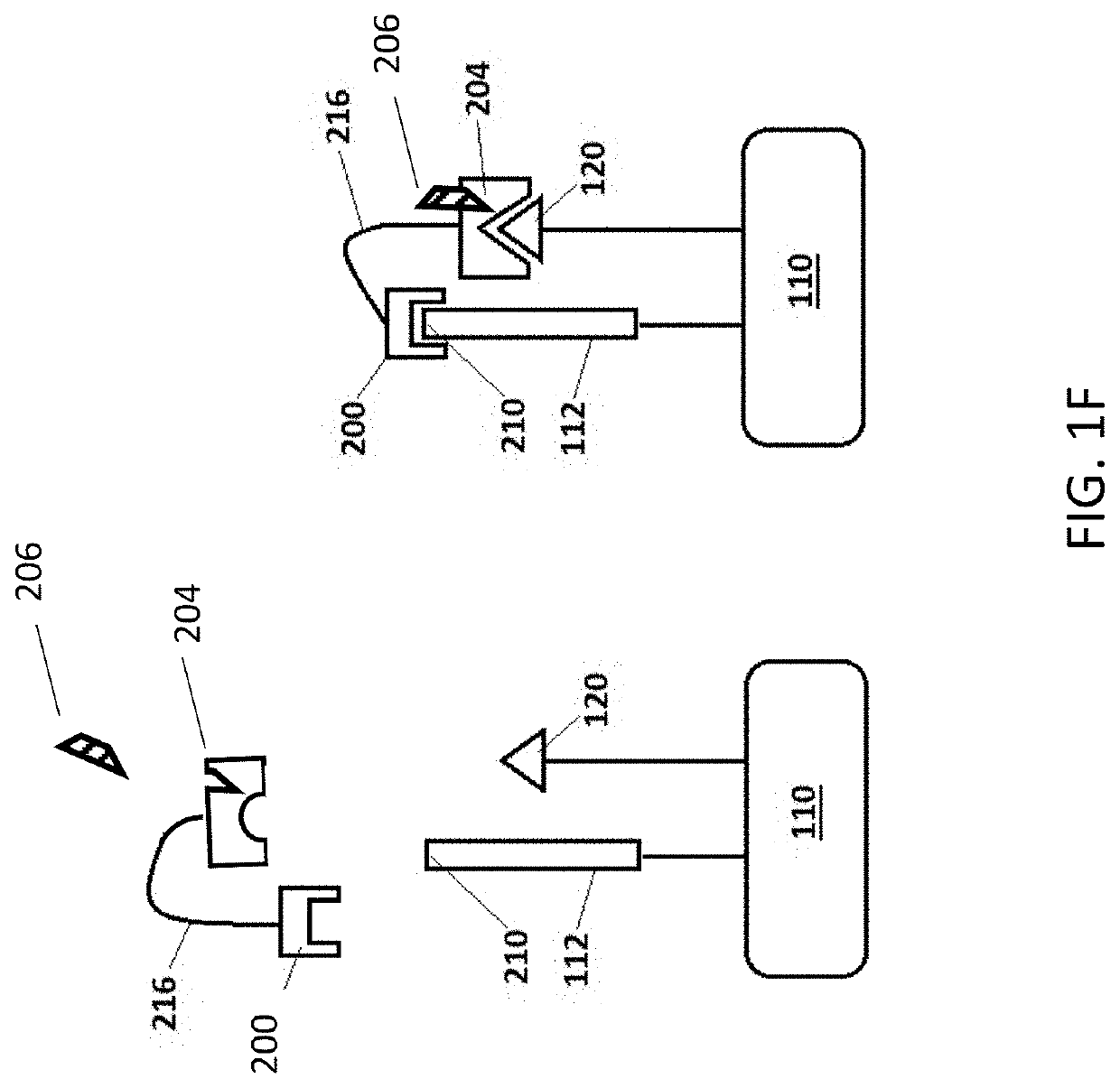Methods for peptide analysis employing multi-component detection agent and related kits
a detection agent and multi-component technology, applied in the field of macromolecule analysis methods and kits, can solve the problems of large sample size, difficult to compare relative amounts between samples, and large sample size requirements,
- Summary
- Abstract
- Description
- Claims
- Application Information
AI Technical Summary
Benefits of technology
Problems solved by technology
Method used
Image
Examples
example 1
Anhydrase as Split Enzyme
[0423]Carbonic anhydrases form a family of enzymes that catalyze the rapid interconversion of carbon dioxide and water to bicarbonate and protons, a reversible reaction that occurs relatively slowly in the absence of a catalyst. The active site of most carbonic anhydrases contains a zinc ion; they are therefore classified as metalloenzymes. The reaction catalyzed by carbonic anhydrase (CA) is as follows:
CO2+H2O→H2CO3→H++HCO3.
[0424]With a kcat (turnover) of 104-106 per second, the reaction rate of carbonic anhydrase is one of the fastest of all enzymes, and its rate is typically limited by the diffusion rate of its substrates.
[0425]In the present example, a peptide and a first detection agent (first portion of a split CA) are joined to a solid support by way of linker L-1. The NTAA of the peptide is identified by sequential binding of up to twenty different binding agents (cognate and non-cognate), each selective for one of the twenty naturally-occurring amin...
example 2
lymerase as Split Enzyme
[0430]In addition to carbonic anhydrase, as illustrated in Example 1, any proteins or enzymes that loses activity when split, but regains activity when co-localized, may be used in the methods disclosed herein. For example, nucleic acids with functional activity have also been split (e.g., DNAzymes and aptamers) and can be utilized in these methods. This example describes using T7 RNA polymerase as the split enzyme (e.g., first and second detection agent). This enzyme catalyzes synthesis of RNA in the 5′ to 3′ direction in the presence of a DNA template containing a T7 phage promoter.
[0431]The split version of T7 RNAP was originally discovered during purification and shown to be active in vitro. While the catalytic core and DNA-binding domain are both located on the C-terminal fragment of split T7 RNAP (sT7 RNAP), the N-terminal fragment is needed for transcript elongation. Specific variants of split T7 RNA polymerases were engineered and can be used in the c...
example 3
nt Proteins as Split Enzymes
[0433]Molecular engineering of fluorescent proteins, such as GFP, has produced several variants with altered spectral characteristics. Moreover, selected fragments of fluorescent proteins can associate with each other to produce functional bimolecular fluorescent complexes, allowing for use them as split fluorescent proteins having different excitation / emission characteristics. Such complementation provides an opportunity for detection of a binding reaction if the fluorescent protein fragments can associate only when they are brought together by interactions between an immobilized polypeptide and binding agents, both fused to fluorescent protein complementary fragments. Interestingly, different fluorescent protein variants can support heterologous fluorescent complex formation generating complexes with distinct spectral characteristics (detectable labels). For example, four fluorescent proteins (namely green, yellow, cyan and blue fluorescent proteins, or...
PUM
| Property | Measurement | Unit |
|---|---|---|
| size | aaaaa | aaaaa |
| size | aaaaa | aaaaa |
| diameter | aaaaa | aaaaa |
Abstract
Description
Claims
Application Information
 Login to View More
Login to View More - R&D
- Intellectual Property
- Life Sciences
- Materials
- Tech Scout
- Unparalleled Data Quality
- Higher Quality Content
- 60% Fewer Hallucinations
Browse by: Latest US Patents, China's latest patents, Technical Efficacy Thesaurus, Application Domain, Technology Topic, Popular Technical Reports.
© 2025 PatSnap. All rights reserved.Legal|Privacy policy|Modern Slavery Act Transparency Statement|Sitemap|About US| Contact US: help@patsnap.com



